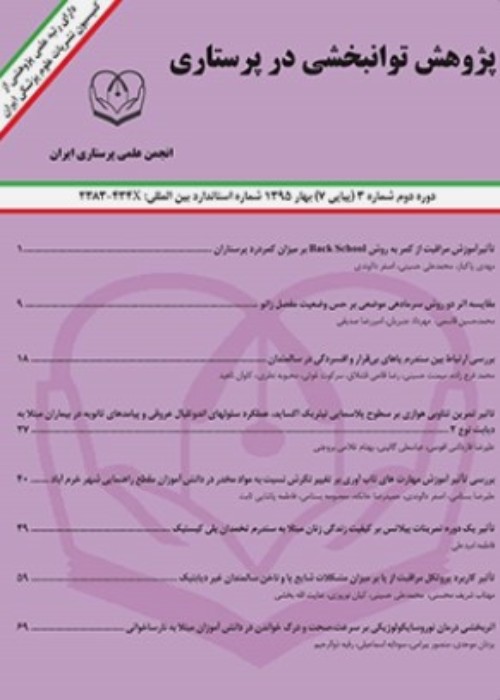The mutual effect of navicular drop and the type of foot covering on the contact forces of ankle and knee joints during running
One of the best interventions in the field of reducing injury and improving performance is running shoes. Despite this, the research results show that achieving the desired result due to using shoes depends on paying attention to other influencing factors such as foot structure. Therefore, the present study was carried out with the aim of investigating the mutual effect of navicular drop and foot cover on the contact forces of lower limb joints during running.
The present study is semi-experimental and applied. 47 male subjects (12 people with high navicular drop, age: 23.08±3.34, 18 people with low navicular drop, age: 22.88±1.96 and 17 people with normal navicular drop, age: 4.5±1.5 21). The participants ran at a speed of three meters per second with three types of barefoot (BF), minimal shoes (MF) and common shoes (CF) and their kinetic and kinematic data were collected. Compressive and shear forces were calculated respectively through the result of perpendicular and parallel forces acting on the surface of the joint. In order to make a statistical comparison, analysis of variance with two-way repeated measurement (foot cover and navicular drop) and Bonferroni's post hoc test were used in SPSS software with a significance level of 0.05.
The results of the present study showed that the amount of navicular drop and foot cover have a mutual effect on the compressive force of the knee (p=0.049). So that the normal drop group had 11.07% (p=0.029) and 15.63% (p=0.002) lower compressive force than MF in BF and CF conditions, respectively. The group with low drop showed 16.28% and 12.27% less compressive force in BF mode than MF (p=0.002) and CF (p=0.009), respectively. Knee compression force in MF was 11.65% higher than BF (p<0.001) and 18.8% higher than CF (p<0.001). Ankle compressive force in CF running was 22.49% more than BF and 15.99% more than MF. Ankle shear force in BF running was 42.86% (p<0.001) and in MF conditions was 38.98% (p<0.001) than CF.
Navi drop in interaction with the foot cover can affect the compressive force of the knee. But alone, it had no effect on ankle and knee contact forces. On the other hand, foot covering is an influencing factor on the forces on the lower limb and probably plays an important role in lower limb injuries.
- حق عضویت دریافتی صرف حمایت از نشریات عضو و نگهداری، تکمیل و توسعه مگیران میشود.
- پرداخت حق اشتراک و دانلود مقالات اجازه بازنشر آن در سایر رسانههای چاپی و دیجیتال را به کاربر نمیدهد.




